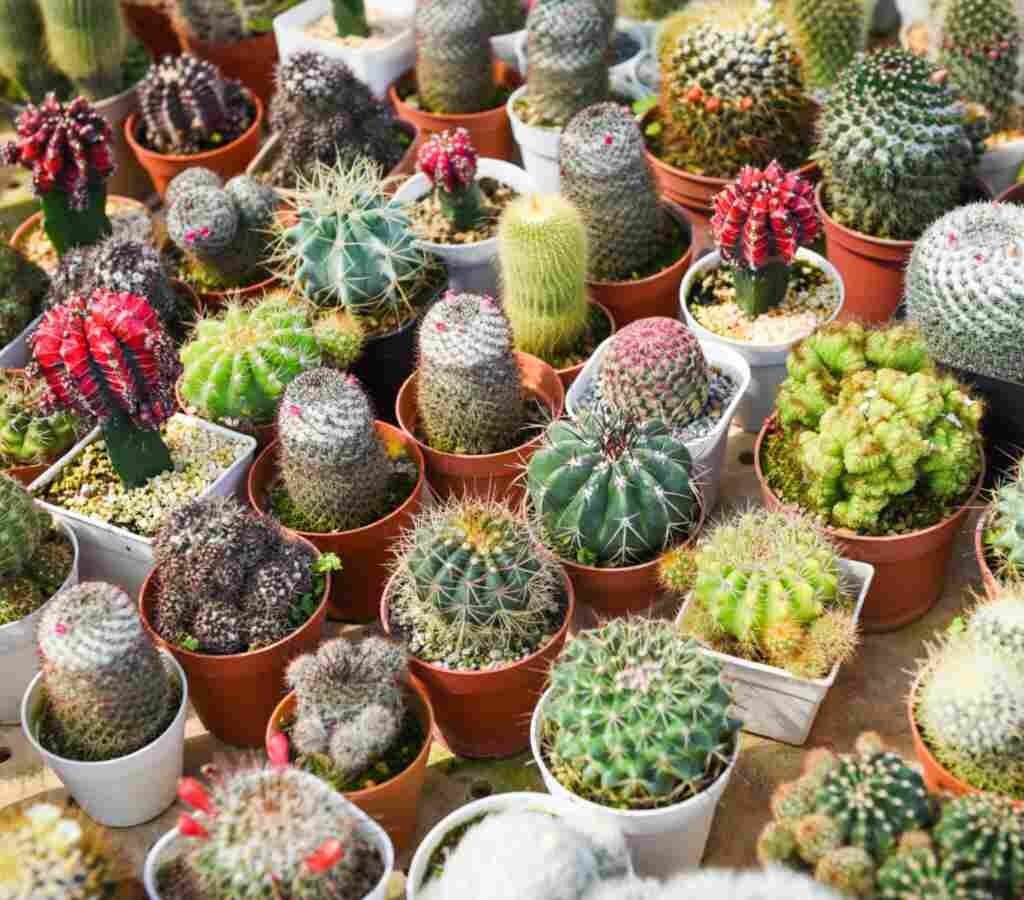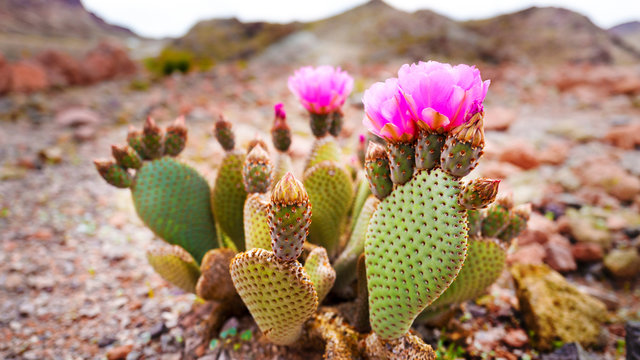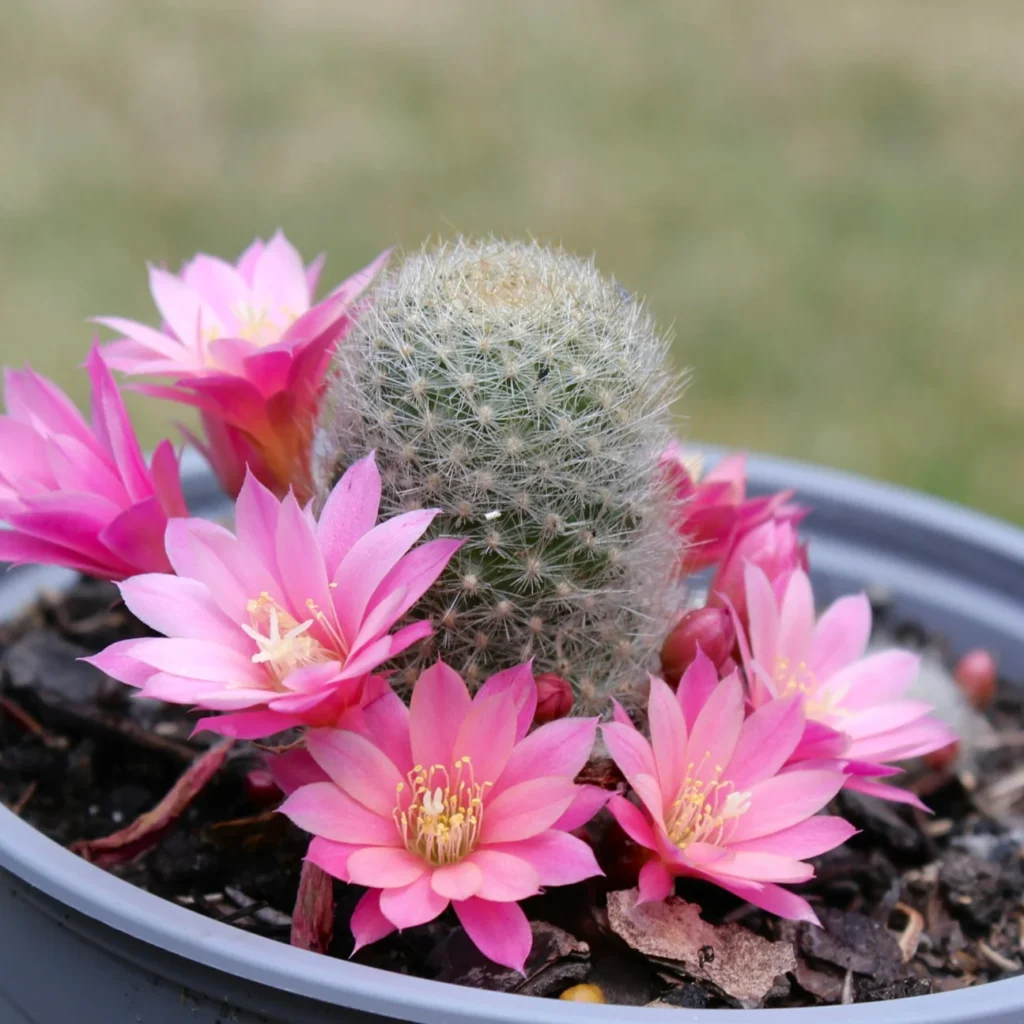Cacti aren’t just about spines and hardy survival — they can also surprise you with some of the most breathtaking, colorful blooms in the plant world. From vivid reds and bright yellows to delicate pinks and radiant whites, cactus flowers are nature’s unexpected treasures.
While many people keep cacti for their easy care and drought tolerance, getting them to bloom can be a bit of an art. It takes patience, the right environment, and a few special care techniques to encourage those spiky beauties to produce flowers.
In this guide, we’ll cover 10 expert-backed tips to help you grow cactus flowers successfully, whether you’re cultivating them indoors or in an outdoor garden.

1. Choose the Right Cactus Species
Not all cacti bloom easily — and some may take years before producing their first flower. If your goal is to enjoy those beautiful blossoms, it’s important to pick species known for reliable flowering.
Popular flowering cacti:
- Easter Cactus (Hatiora gaertneri): Bright pink or red flowers.
- Christmas Cactus (Schlumbergera): Winter blooms in various colors.
- Moon Cactus (Gymnocalycium mihanovichii): Striking neon flowers.
- Prickly Pear (Opuntia): Gorgeous yellow, pink, or red flowers.
- Chin Cactus (Gymnocalycium): Early bloomers with pink or white flowers.
- Echinopsis: Famous for their large, dramatic blooms.
Check your local nursery or garden center for cacti suited to your region’s climate and growing conditions.

2. Provide Plenty of Bright, Indirect Sunlight
Cacti are sun lovers, but too much harsh direct sunlight — especially for indoor plants — can scorch their delicate tissues. The key is to provide bright, indirect light for most cactus species.
Light care tips:
- Place indoor cacti near south- or east-facing windows.
- If outdoors, give them a spot with morning sun and afternoon shade.
- Use sheer curtains to filter intense sunlight for indoor cacti.
- Rotate pots weekly to encourage even growth and prevent leaning.
Adequate light is essential for strong, healthy growth and for triggering flowering cycles in many cactus varieties.

3. Use Well-Draining, Sandy Soil
Cactus flowers won’t thrive in soggy, dense soil. Cacti are desert plants that require loose, sandy, well-draining soil to keep their roots healthy and prevent rot.
Soil tips:
- Use a special cactus or succulent potting mix.
- If making your own mix, combine two parts potting soil, one part coarse sand, and one part perlite or pumice.
- Ensure your container has drainage holes to prevent water buildup.
Good drainage promotes healthy roots, which is critical for a flowering cactus.

4. Master the Art of Proper Watering
Overwatering is one of the most common reasons cacti fail to flower. The trick is to mimic their natural desert conditions — periods of dryness followed by deep watering.
Watering tips:
- Water thoroughly when the soil is completely dry.
- In growing seasons (spring and summer), water every 7–14 days.
- In winter, reduce watering to once every 3–4 weeks.
- Avoid letting water pool in the plant’s crown or base.
A balanced watering schedule encourages your cactus to enter its natural flowering cycle.

5. Allow for a Cool, Dry Dormancy Period
Many flowering cacti require a dormant period in winter to rest before blooming in the warmer months. This period of reduced water, cooler temperatures, and less light signals the plant to prepare for flowering.
Dormancy care tips:
- Move cacti to a cool, dry area (around 50–60°F/10–15°C) in late fall.
- Water sparingly — once every 3–4 weeks, just enough to prevent shriveling.
- Stop fertilizing during this time.
- Keep them away from heating vents or drafty windows.
Once spring arrives and conditions warm up, gradually resume regular care to trigger blooming.

6. Fertilize During the Growing Season
A nutrient boost during the active growing season can support healthy blooms. Cacti benefit from a balanced, diluted fertilizer specifically formulated for succulents or flowering plants.
Fertilizing tips:
- Use a low-nitrogen, high-phosphorus fertilizer (like 5-10-10) to promote blooms.
- Apply every 4–6 weeks during spring and summer.
- Avoid over-fertilizing, as this can harm your cactus.
Well-fed cacti are more likely to produce abundant, colorful flowers.
7. Repot When Necessary
As your cactus grows, it may become root-bound, restricting its ability to absorb nutrients and bloom. Repotting every 2–3 years keeps your cactus healthy and encourages flowering.
Repotting tips:
- Choose a container 1–2 inches larger in diameter than the current one.
- Use fresh, well-draining cactus soil.
- Handle the plant carefully using thick gloves or tongs.
- Wait a week before watering to allow root injuries to heal.
Fresh soil and extra room give your cactus a fresh start and better blooming potential.
8. Protect Your Cactus from Pests and Diseases
Even tough cacti can fall victim to pests like mealybugs, spider mites, and scale — all of which can weaken your plant and stop it from flowering.
Pest control tips:
- Inspect regularly for cottony white spots (mealybugs) or webbing (spider mites).
- Wipe pests away with alcohol-soaked cotton swabs.
- Use a neem oil spray or insecticidal soap if infestations persist.
- Ensure good air circulation to prevent fungal diseases.
Healthy, pest-free cacti are more likely to produce flowers.
9. Encourage Bud Formation with Temperature Shifts
Some cacti need a noticeable shift in day and night temperatures to trigger bud formation. Mimicking their natural desert environment encourages them to bloom.
Temperature tips:
- Aim for daytime temperatures of 70–85°F (21–29°C) and nighttime lows of 50–60°F (10–15°C).
- Outdoors, move potted cacti to a sheltered area in spring to expose them to natural temperature fluctuations.
- Indoors, place cacti near windows where night temperatures drop slightly.
These changes can help kickstart the flowering process.
10. Be Patient — Some Cacti Take Time to Flower
Even with perfect care, certain cactus species are notoriously slow to bloom. Some may take 2–5 years or longer before producing flowers, especially if grown from seed.
Patience tips:
- Focus on providing the right environment rather than rushing blooms.
- Enjoy your cactus’s unique textures, shapes, and resilience along the way.
- Remember that when flowers finally appear, they’ll be well worth the wait!
Patience is part of the cactus-growing journey, and each bloom is a rewarding milestone.
Final Thoughts: Cultivating Desert Beauty
Growing cactus flowers successfully combines science, art, and a little bit of patience. By choosing the right species, offering balanced care, and mimicking their natural conditions, you’ll set the stage for your prickly friends to reward you with their rare and radiant blooms.
Whether you’re growing cacti indoors, on a sunny balcony, or in a desert-style garden, these resilient plants can bring color and beauty to your space in unexpected and delightful ways.
So grab your gloves, mix up some sandy soil, and get ready to grow a desert masterpiece!



